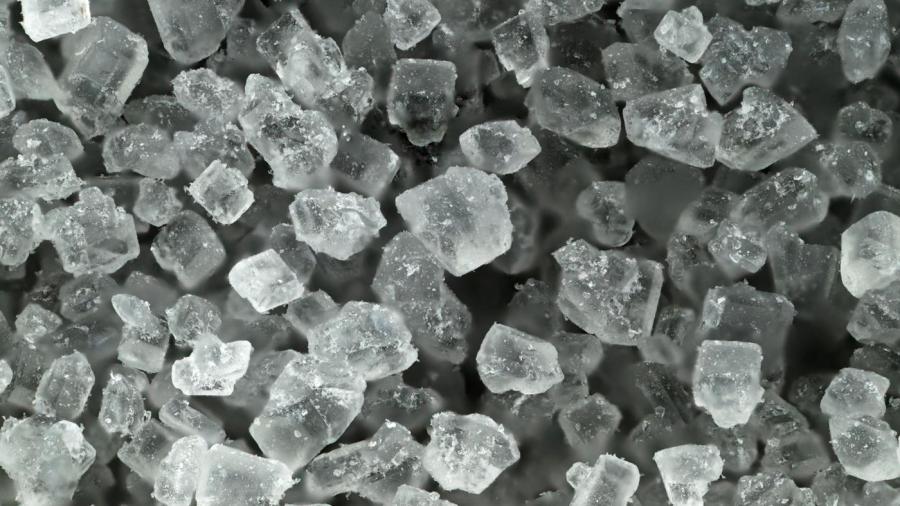What Is the Difference Between Salt and Sugar Crystals?

Sugar and salt crystals are made of entirely different elements and have very different chemical and physical properties. While both dissolve readily in water, they dissolve in different ways, and unlike sugar, the dissolution of salt is largely unaffected by temperature. Their greatest similarities are in their common appearance as small white crystals and their use in the preparation and flavoring of food.
The sugar most often used by humans is sucrose. This covalent compound is most often derived from sugar beets or sugar cane. It is composed entirely of covalently bonded carbon, oxygen and hydrogen atoms. The bond between oxygen and either carbon or hydrogen is very polar, and the configuration of the sucrose molecule makes it polar overall. It is this polar nature that allows sugar to dissolve readily in water, with its solubility increasing at higher temperatures.
The salt most commonly encountered by humans is sodium chloride. Sodium chloride crystals are not made of individual molecules; they are composed of a crystalline lattice of sodium and chloride ions. Each sodium ion is ionically bonded – that is, held together with opposite charges – to each of the chloride ions around it. When salt dissolves, the water is pulling individual ions into solution rather than whole molecules, as is the case with sugar.





